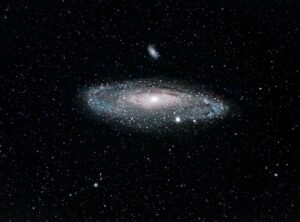When it comes to finding the best locations for viewing the Milky Way, there are a few key factors to consider. First and foremost, you’ll want to find a place that is far away from light pollution. This means getting as far away from cities and towns as possible, and ideally finding a spot that is designated as a dark sky location. Some of the best places for viewing the Milky Way include national parks and remote wilderness areas, where the night sky is free from the glare of artificial lights.
One of the most famous locations for viewing the Milky Way is in the desert southwest of the United States, where places like Utah’s Bryce Canyon and Arizona’s Grand Canyon offer stunning views of the night sky. In addition to the United States, other countries like New Zealand, Chile, and Namibia also offer excellent opportunities for stargazing. These locations are often situated in remote areas with minimal light pollution, allowing for a clear and unobstructed view of the Milky Way. Whether you’re an amateur astronomer or just someone who appreciates the beauty of the night sky, visiting one of these prime locations can be a truly awe-inspiring experience.
Key Takeaways
- The best locations for viewing the Milky Way include remote areas with minimal light pollution, such as national parks and deserts.
- The science behind the Milky Way involves understanding its structure as a spiral galaxy, containing billions of stars and other celestial objects.
- Tips for viewing the Milky Way include using a telescope or binoculars, choosing a clear night with no moon, and allowing your eyes to adjust to the darkness.
- The history of studying the Milky Way dates back to ancient civilizations, with significant contributions from astronomers such as Galileo and Hubble.
- The cultural significance of the Milky Way is evident in various mythologies and folklore around the world, often symbolizing a pathway or river in the sky.
- The impact of light pollution on viewing the Milky Way has led to efforts to preserve dark sky areas and reduce artificial light at night.
- The future of viewing the Milky Way may involve advancements in technology for space exploration and continued efforts to protect dark sky areas for stargazing.
The Science Behind the Milky Way
The Milky Way is a barred spiral galaxy that is home to our solar system and billions of other stars. It gets its name from its appearance as a hazy band of light that stretches across the night sky, resembling spilled milk. The Milky Way is estimated to be about 100,000 light-years in diameter and contains between 100 to 400 billion stars. At the center of the Milky Way lies a supermassive black hole, which has a mass equivalent to about 4 million suns.
The Milky Way is made up of various components, including a central bulge, a disk where most of the stars are located, and spiral arms that contain gas, dust, and young stars. Our solar system is located in one of the spiral arms, known as the Orion Arm or Local Spur. The Milky Way is also part of a group of galaxies known as the Local Group, which includes over 54 other galaxies such as the Andromeda Galaxy and the Triangulum Galaxy. Studying the Milky Way provides valuable insights into the formation and evolution of galaxies, as well as the nature of dark matter and dark energy.
Tips for Viewing the Milky Way
If you’re interested in viewing the Milky Way, there are a few tips that can help enhance your experience. First and foremost, it’s important to find a location that is free from light pollution. This means getting as far away from cities and towns as possible, and ideally finding a spot that is designated as a dark sky location. It’s also important to check the weather forecast and choose a night with clear skies and minimal cloud cover.
Another tip for viewing the Milky Way is to bring along some essential gear, such as a red flashlight to preserve your night vision, a comfortable chair or blanket for stargazing, and perhaps even a telescope or binoculars for a closer look at celestial objects. Additionally, it’s helpful to familiarize yourself with the night sky by using a star chart or astronomy app to identify constellations and other celestial landmarks. Finally, be patient and give your eyes time to adjust to the darkness, as it can take up to 20 minutes for your eyes to fully adapt to low-light conditions.
The History of Studying the Milky Way
| Year | Discovery/Milestone |
|---|---|
| 1609 | Galileo Galilei uses a telescope to observe the Milky Way and discovers it is made up of countless stars. |
| 1785 | William Herschel maps the shape of the Milky Way, suggesting it is a disc-shaped collection of stars. |
| 1920 | Harlow Shapley determines the Sun’s position in the Milky Way and that it is not at the center of the galaxy. |
| 1951 | Jan Oort discovers the rotation of the Milky Way and the presence of dark matter. |
| 1990s | The Hipparcos satellite mission provides a detailed 3D map of the Milky Way’s stars. |
The study of the Milky Way dates back thousands of years, with ancient civilizations observing and documenting its appearance in the night sky. In ancient Greece, philosophers like Democritus and Anaxagoras speculated about the nature of the Milky Way, with some suggesting that it was composed of distant stars. However, it wasn’t until the invention of the telescope in the 17th century that astronomers were able to study the Milky Way in greater detail.
One of the key figures in the history of studying the Milky Way was Galileo Galilei, who used his telescope to observe and document numerous celestial objects, including stars and nebulae within the Milky Way. In the 18th and 19th centuries, astronomers like William Herschel and Charles Messier made significant contributions to our understanding of the Milky Way by cataloging star clusters, nebulae, and other objects within our galaxy. Today, astronomers continue to study the Milky Way using advanced telescopes and instruments, uncovering new insights into its structure, composition, and evolution.
The Cultural Significance of the Milky Way
The Milky Way has held cultural significance for countless civilizations throughout history. In many ancient cultures, it was seen as a celestial river or pathway that connected the earth to the heavens. For example, in Greek mythology, it was believed that the Milky Way was formed by milk from the breast of Hera, the queen of the gods. In Chinese mythology, the Milky Way was known as the “Silver River” and was associated with a love story between two celestial lovers separated by the river.
In addition to mythology, the Milky Way has also played a significant role in art, literature, and religion. It has been depicted in countless works of art, from ancient cave paintings to modern-day masterpieces. In literature, it has been used as a symbol of wonder and mystery, inspiring poets and writers throughout history. In religious traditions, it has been seen as a pathway to enlightenment or a representation of divine creation. The cultural significance of the Milky Way continues to resonate today, as people around the world are captivated by its beauty and symbolism.
The Impact of Light Pollution on Viewing the Milky Way

Light pollution has become a major concern for astronomers and stargazers alike, as it can significantly diminish our ability to view celestial objects like the Milky Way. Light pollution is caused by excessive or misdirected artificial light, which can create a brightening of the night sky that obscures stars and other celestial objects. It can also disrupt natural ecosystems and have negative effects on human health.
In addition to impacting our ability to view the Milky Way, light pollution can also have broader implications for wildlife and ecosystems. Many species rely on natural patterns of light and dark for navigation, feeding, and reproduction, so excessive artificial light can disrupt these behaviors. Light pollution can also have negative effects on human health, disrupting circadian rhythms and sleep patterns. As such, efforts to reduce light pollution are not only beneficial for stargazing but also for preserving natural habitats and promoting human well-being.
The Future of Viewing the Milky Way
As light pollution continues to be a concern for stargazers around the world, efforts are being made to preserve dark sky locations and reduce artificial light emissions. Organizations like the International Dark-Sky Association (IDA) work to designate dark sky parks and reserves where people can experience unobstructed views of the night sky. Additionally, advancements in technology are making it easier for people to experience the wonders of the Milky Way through virtual reality experiences and high-resolution images captured by space telescopes.
In terms of scientific research, astronomers are continuing to study the Milky Way using advanced telescopes and instruments like the Hubble Space Telescope and upcoming observatories like the James Webb Space Telescope. These efforts will provide new insights into the formation and evolution of our galaxy, as well as help us better understand our place in the universe. As we look towards the future, it’s clear that there will always be a sense of wonder and fascination surrounding the Milky Way, inspiring people to seek out its beauty and unravel its mysteries for generations to come.
Discovering the mysteries of the Milky Way galaxy has always fascinated humanity. From our vantage point on Earth, we strive to understand the vastness and complexity of our cosmic neighborhood. As we delve into the wonders of space, technological advancements continue to push the boundaries of our understanding. In a related article, “Apple Vision Pro: A Glimpse into the Future of Spatial Computing,” explores how cutting-edge technology is shaping our perception of space and reality. This article sheds light on the innovative strides being made in spatial computing, offering a glimpse into a future where our understanding of the Milky Way and beyond may be transformed. (source)




















+ There are no comments
Add yours